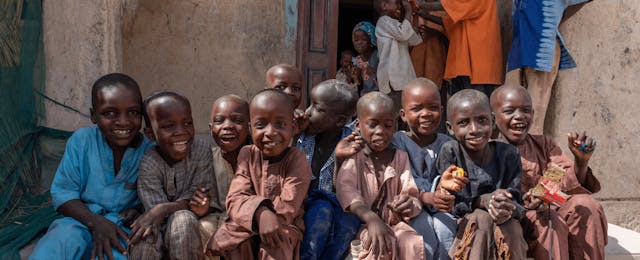


Today, the World Health Organization (WHO) released its 2021 World Malaria Report, an annual report that provides a comprehensive update on the state of the global and regional malaria fight. The report provides the most recent data on malaria prevention, diagnosis, treatment and surveillance, and tracks global investments in malaria programs and research.
This year’s report reveals the devastating impacts of the pandemic and other crises on the global fight against malaria, while outlining what we need to get back on track to end this deadly disease for good.
Here’s what you need to know:
This year’s World Malaria Report used a new methodology to calculate the number of malaria deaths among children under 5 years old. This new methodology is being used across WHO and provides more precise cause-of-death estimates for young children for all diseases – including malaria – going all the way back to 2000. It reveals higher numbers of malaria deaths than previously thought, underscoring the urgency of the malaria fight.
Thanks to swift and effective action by endemic countries and global partners, the projected worst-case scenario of a doubling of malaria deaths was averted. For example, the U.S. President’s Malaria Initiative successfully completed all of their planned bed net campaigns in 2020, and the Global Fund to Fight AIDS, TB, and Malaria delivered 188 million bed nets — nearly 32 million more than in 2019. But despite these heroic efforts, even the moderate disruptions in the delivery of malaria services seen in 2020 contributed to significant increases in malaria cases and deaths.
According to this year’s report, many countries with a low burden of malaria continue to move steadily towards the goal of malaria elimination. Two countries – El Salvador and China – were certified malaria-free by WHO this year and 25 others are on pace to reach zero malaria cases by 2025. However, most countries bearing a high burden of malaria suffered setbacks over the last year and are losing ground in the fight.
The massive scale–up and use of tools to prevent, detect and treat malaria over the last two decades has led to remarkable progress in the fight against malaria. This year’s report demonstrates these gains, while also highlighting the significant – and in some cases, widening – gaps in access to these life-saving tools for people at risk of malaria.
The progress made in the fight against malaria remains fragile, especially in sub-Saharan Africa, where the malaria burden remains unacceptably high. Emerging threats put decades of progress at risk, including insecticide and antimalarial resistance, invasive new malaria-carrying mosquitoes in urban areas, and parasite mutations that make malaria diagnosis more difficult. The COVID-19 pandemic continues to put strain on endemic countries’ health systems and economies, making it even harder to respond to these urgent threats. Increased investment and prioritization of malaria R&D and innovation are more urgent than ever to fight these new challenges.
This year’s World Malaria Report underscores the urgent need for a strong and well-resourced global malaria response, including increased investment to develop and deliver innovative tools and strategies to help us rise to emerging challenges. Even before the emergence of COVID-19, progress in the fight against malaria had reached a plateau. Now, critical 2020 milestones of WHO’s global malaria strategy have been missed, and without immediate and dramatic action, the 2030 targets will also not be met.
Since 2000, the U.S. government has led the global fight against malaria through time-tested partnerships, scaling up of proven interventions, and groundbreaking innovations. However, U.S. leadership in the fight against malaria is needed now more than ever to protect decades of progress and ensure no child dies from a mosquito bite. As the host of the Seventh Replenishment of the Global Fund next fall, it is critical that the United States remain dedicated in this fight to encourage the rest of the world to join in and get malaria elimination back on track.
2022 will be a critical year for the malaria fight. We need you to raise your voices in support of vital malaria programs – in particular, the Global Fund and the President’s Malaria Initiative (PMI) – that protect millions of people each year from malaria and keep the world on track towards global eradication. Mark your calendars to participate in our upcoming virtual Leadership Summit (March 13-15, 2022).
Help us and our friends at the RBM Partnership to End Malaria spread the word in your networks. Click here for a toolkit full of suggested social media posts and downloadable graphics.
Read the WHO World Malaria Report 2021
WHO World Malaria Report 2021 press release
RBM Partnership to End Malaria statement
Follow the conversation on social at @nothingbutnets and @zeromalaria